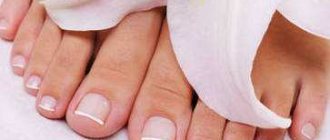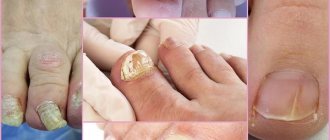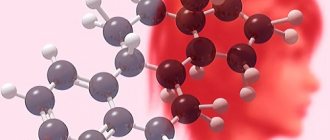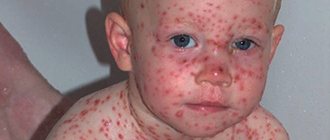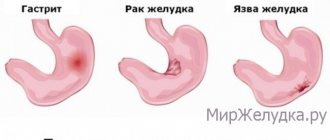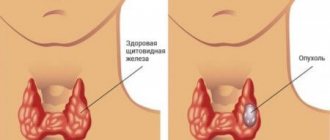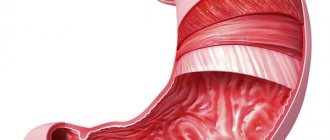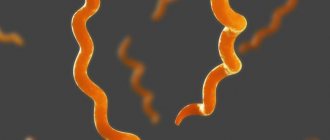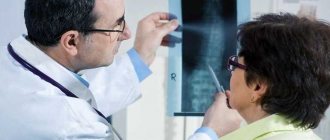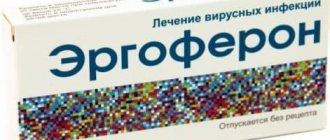In medicine, nail fungus is called onychomycosis. This pathological condition often spreads to the fingernails, making them aesthetically unattractive. In addition, the quality of human life deteriorates, since fingers and hands often become swollen and painful.
If you detect the disease in time and begin to treat it, then such consequences can be avoided. Antifungal drugs and alternative therapies are considered effective in the fight against pathology.
Symptoms of fingernail fungus
At the initial stage, the patient may not pay attention to the nail affected by the fungus. In this case, the color of the skin of the fingers changes (pale or bluish), the nail plate becomes thinner and begins to crumble. On its surface along its length, grooves of varying sizes are found.
Usually, the fungus first begins to affect the first and fifth fingers.
The following symptoms of pathology are determined:
- split nail plates;
- change in shade (part of the surface of the nail may be yellow, green or even black);
- deterioration of shine, dullness of the nail plate;
- swelling of the periungual areas and itching in these areas;
- the presence of yellow or white spots on the plate;
- fragility and brittleness of the nail;
- sore fingers.
If there is a fungal infection, the diseased nail grows slowly. The plate begins to deform and becomes brittle. Therefore, its edges may be uneven. In advanced forms, a dense formation appears on the surface, the nail usually crumbles and falls off.
Signs of onychomycosis also depend on the form of fungal infection. Symptoms of various types of nail fungus are given in the table:
| Fungus shape | Symptoms | |
| Surface white |
| |
| Normotrophic |
| |
| Hypertrophic |
| |
| Atrophic |
| |
| Distal |
| |
| Proximal |
| |
| Lateral |
| |
| Total |
| |
If these signs develop, you should definitely consult your doctor. If treatment is ignored, the fungus can cause serious consequences.
How do you get infected with fungus?
The main cause of fungus is a weak or weakened immune system. An organism that is unable to fight infection will become infected with a fungus. To prevent this risk, it is recommended to take a course of vitamins 1-2 times a year, especially for residents of megacities and industrial cities. You should consult a doctor for advice. He will prescribe the most suitable vitamin complexes that will bring maximum benefit to the body.
Pregnancy is a period during which you need to pay maximum attention to your health. Due to the complete restructuring of the body, its protective functions may be weakened. This can also lead to the onset of onychomycosis.
Another popular reason is high humidity coupled with warm temperatures. For example, such an environment is typical for swimming pools, saunas and baths. It's easiest to catch nail fungus there. Moisture and heat are the ideal combination for the proliferation of harmful bacteria. This is where they feel comfortable being active. In addition, the same conditions arise after walking on a wet road, be it earthen or asphalt. This is why it is necessary to dry your shoes after visiting the street. All shoes, shoes and boots should be stored in a dry place that is well ventilated.
The disease can be transmitted during a manicure or pedicure. If a person cuts and processes his nails on his own, he must do it carefully, without being distracted by extraneous things. If there are cuts, burrs or scratches, you should stop the procedure and wipe the wound with hydrogen peroxide, iodine or brilliant green.
Here's how you can get a fungus
If nail care is carried out in a salon or by a stranger, you need to make sure that the instruments are sterile. The master should do manicures and pedicures only in rubber gloves, which are first sprayed with disinfectant. The manicure table should also be clean and sterile. It is not permitted to use the same raw instrument for different clients.
More on Med-Gribok.Ru:
Zelenka as a treatment for nail fungus
Powered by Inline
Stages of fungal infection
The pathological condition occurs in 3 stages. Each stage is characterized by certain characteristics:
- At the initial stage, nail fungus on the hand appears as small spots of a pale shade. Peeling appears on the skin of the fingers, itching or a burning sensation may occur. Red bubbles with clear liquid inside also form.
- The second stage is characterized by the formation of furrows, changes in the shape and thickness of the nail plate, and loss of shine. The nail may partially or completely turn yellow, brown, black, green or gray. It begins to peel and break. The blisters begin to burst, and erosions form in their place, which are very itchy.
- At the third stage, deformation and destruction of the nail is observed. In addition, the skin on the fingers hurts, swells and turns red.
At the last stage, the nails completely disappear from the fingers. With advanced fungal infection, purulent processes begin in the periungual area.
Causes of pathology
The disease develops when the fungus gets on the nails or periungual skin of a healthy person from an infected person. Most often, the infection can be picked up in a beauty salon during a manicure if the master does not follow the sanitary and hygienic rules for treating nails.
Infection can occur in public places through contact with objects and things that have been touched by a person with nail fungus. Pathology develops especially often in people with wet hands and dirt under their nails. This is explained by the fact that such an environment is conducive to the development of infection.
There are factors that provoke the development of fungal infection. Onychomycosis occurs in the following cases:
- with weakened immunity;
- if hygiene rules are violated;
- after using antibiotics;
- if there are injuries and cracks on the skin of the hands or nails;
- when my hands were frostbitten.
The appearance of fungus is influenced by stressful situations.
People most often infected with HIV are people with diabetes. Patients with vascular diseases are at risk.
Diagnosis and treatment
To find out whether a patient has nail fungus, a dermatologist examines the hands and the skin adjacent to the affected area. This is common among service workers and athletes. To get rid of the infection, all infected areas will need to be treated.
Before making a diagnosis, the dermatologist may take some samples - some debris from under the nail, a piece of nail clipping, or a piece of skin. In the laboratory, these samples are examined under a microscope to determine the source of the problem.
Treatment of fungus on fingernails
To cure nail fungus, complex treatment is prescribed. For this purpose, the following methods are used:
- drug therapy;
- use of alternative treatments;
- elimination of fungus using laser.
Drug therapy may include the use of the following forms of medications:
- ointments;
- cream;
- pills;
- plasters;
- solutions;
- antifungal varnishes;
- oils;
- aerosols.
Folk remedies are used as auxiliary methods. They can cure fungus at home.
Medicines
Treatment of nail fungus with traditional medicine has a number of undeniable advantages:
- Any medication is supplied with instructions that indicate the exact dosage and duration of treatment. Possible side effects and contraindications are described.
- Along with the active ingredient, any drug includes excipients (inhibitors, easily digestible proteins, etc.) that mitigate the side effects of the main one.
- The course of treatment takes much less time than treatment with folk remedies.
- The treatment procedure takes a matter of minutes, and treatment with folk remedies sometimes takes up to an hour of your precious time every day for several months.
- Medications undergo strict testing for compliance with state standards, often more than one.
- Unlike folk remedies, treatment with medications does not require auxiliary components.
Traditional medicine preparations according to the method of administration are divided into:
- internal (oral) – tablets, capsules;
- external - ointments, varnishes, bath solutions.
Important! Whatever treatment method you choose - folk remedies or drugs, it is better to consult a dermatologist. The fact is that fungal spores can remain in a so-called dormant state for many months. Untreated nail fungus, over time, can develop into a serious disease of the internal organs, most often the respiratory tract.
Treatment with medication
The choice of medications is prescribed by a specialist depending on the duration and nature of the pathology and the area of the affected area. The doctor also takes into account the presence of concomitant diseases, as well as the individual characteristics of the body.
Antifungal ointments
Most often, topical preparations are used to eliminate fungus. The following drugs are effective against infection:
- Misol;
- Zalain;
- Triderm;
- Exoderil;
- Nizoral;
- Atifin;
- Mycosporus;
- Clotrimazole;
- Mifungar;
- Levorin ointment;
- Fundizol;
- Mycozoral;
- Bifosin;
- Miconazole;
- Lamisil;
- Terbizil;
- Ecodax;
- Fundizol;
- Cyclopiroxolamine;
- Nystanin ointment.
Medicines are applied to the nail plate several times a day.
Special varnishes
Special varnishes are considered effective medicines in the fight against fungus. They are applied to the surface of the nail according to the instructions.
The following antifungal agents can be purchased in pharmacies:
- Loceryl;
- Vicks;
- Oflomil;
- Nailtain;
- Amoderm Neo;
- Neil Expert;
- Ciclopirox;
- Demicten.
These medications are used not only for therapeutic but also for preventive purposes.
Pills
Experts prescribe the tablet form of antifungal drugs in combination with external methods of treatment for advanced pathology.
Among the commonly prescribed drugs:
- Itraconazole;
- Orungal;
- Irunin;
- Terbinafine;
- Fungavis;
- Ketoconazole;
- Onyhon;
- Fluconazole.
The duration and regimen of therapy is determined by a specialist.
Antifungal solutions and aerosols
Antifungal solutions are most often prescribed for external use. The following drugs fight the disease well:
- Exoderil;
- Clotrimazole;
- Bifonazole;
- Fukortsin;
- Mikozan;
- Nitrofungin;
- Fundizol;
- Exifin;
- Dimethyl phthalate.
Special sprays Lamisil or Daktarin help get rid of fungal infections. Antimycotic aerosols include Terbix, Fungoterbin and Thermikon.
Plasters to eliminate the affected nail
To remove a damaged nail painlessly, you can use the following patches:
- Nogtimycin;
- Nailitis.
Before using them, you need to take a hot bath for your hands to steam your nails. The patches are left on the affected area for several days. Then the diseased nails are steamed again and removed with scissors.
These products help remove a completely destroyed nail from a finger. If the first time, eliminating it did not work, then the procedure is repeated.
Video - Onychomycosis
AcuPulse
CO2 laser AcuPulse Lumenis - fractional ablation for radical rejuvenation
Elena Baranova demonstrates and comments in detail on the main stages of the fractional rejuvenation procedure using the AcuPulse device.
AcuPulse
CO2 laser Acupulse™ for fractional and complete ablation
Certified trainer of Lumenis companies Diana Demidion about the advantages of the Acupulse device.
AcuPulse
Non-surgical blepharoplasty procedure using Acupulse CO2 laser
The chief physician of the Academy of Cosmetology Premium Aesthetics, Diana Demidion, talks in detail about the procedure and demonstrates it.
AcuPulse
Presentation of the AcuPulse device
The AcuPulse CO2 laser from Lumenis is a device for fractional ablation.
AcuPulse
Superpulse fractional CO2 laser Acupulse
An overview video about the capabilities of the Acupulse superpulse fractional CO2 laser from Lumenis.
All Videos
Traditional medicine
In alternative therapy, there are many effective antifungal methods and remedies. If you use them for a long time, you can get rid of the disease. These medications are especially effective in the early stages of pathology.
Hand baths
Hand baths especially help with nail fungus. It is recommended to steam brushes in the following products:
- Sea salt solution. Add a spoonful of salt to a liter of hot water and stir. The procedure takes half an hour.
- Strong coffee. The product is poured into a bowl and your hands hover in it. You can replace coffee with strong tea.
- Listerine, lemon juice and apple cider vinegar. The solution is made slightly hot.
- Potassium permanganate solution. Add several crystals of the product per liter of water.
It is also recommended to steam your hands first in a solution of apple cider vinegar, then in warm water with the addition of soda.
For baths, decoctions are prepared from medicinal plants that have an antifungal effect. These include:
- spurge;
- forest blackberry;
- celandine;
- echinacea;
- chamomile;
- verbena;
- horsetail;
- marigold.
You can make these decoctions separately or in collections.
It is also good to steam your hands in solutions with the addition of essential oils or mineral salts.
You must keep your hands in the baths for at least twenty minutes. It is good to lubricate the nail plate after the procedure with olive oil or tea tree oil.
Ointments
These medicines can be prepared at home using natural ingredients. The following ointments are effective:
- From garlic. The medicine is made from crushed garlic and butter. Then they lubricate the sore nail with it.
- Tar ointment. Prepared on the basis of honey, sulfur and birch tar.
- From glycerin and vinegar. Take alcohol, vinegar and glycerin in a ratio of 2:1:1. The ingredients are thoroughly mixed.
- Vinegar-egg ointment. A raw egg with shell, half a glass of vinegar and a stick of butter are placed in a glass container. The contents are placed in a cold place without stirring for seven days. After this time, the products are mixed and spread regularly on problem nails.
You can also make ointments based on apple cider vinegar.
Compresses
To get rid of fungus, it is recommended to make compresses from the following products:
- Alcohol propolis solution.
- Ammonia diluted in water.
- A mixture of salt and chopped mint.
- Celandine juice.
- Hydrogen peroxide.
- Alcohol infusion of apricot resin.
- Birch tar.
- Tea mushroom.
- Sour cream.
- Tea tree oil.
- Tangerine or lemon juice.
- Porridge with crushed horseradish root.
- Chopped onion.
- Burdock leaves.
- Novocaine.
- Vinegar and sunflower oil.
- Chopped berries and rowan leaves.
These compresses are applied to the affected areas for several hours.
Prevention measures
Onychomycosis can be treated, but it takes a long time. Therefore, it is easier to prevent a disease than to treat it. Prevention methods include:
- Strengthening the immune system.
- Timely treatment of frostbite and burns on the hands.
- Avoid contact with an infected person.
- Treat nails only with sterilized instruments.
- Manicure performed by a master wearing disposable gloves.
- Compliance with hand hygiene rules.
- Proper nail care: removing dirt.
- If there is a person in the house with a fungal infection of the fingernails, then you should wipe the objects with which he came into contact with alcohol or vinegar.
If a change in the color and thickness of the nail is detected, it is not allowed to mask it with colorless varnish.
To avoid the development of onychomycosis, it is recommended to periodically make hand baths with decoctions of medicinal herbs, such as calendula, chamomile, and horsetail. It is advisable to lubricate your hands with tea tree or olive oils.
Thus, fingernail fungus is difficult to treat, so it should be detected in the early stages. When the damage is still mild, therapy can last several weeks. It takes months to treat an advanced form. Medications of various dosage forms and folk remedies are very helpful in the fight against fungus.
Places of infection
To the question: where can you get infected, you can answer that the fungus can easily be caught in many public places, which we will consider below:
- it is worth visiting bathhouses, saunas and swimming pools less;
- It is also necessary to carefully select a beauty salon. Some craftsmen do not clean tools after their clients, so fungal microorganisms can be transmitted through them;
- in some cases, you can become infected with onychomycosis in a shoe store, so you should not try on any shoes without socks or stand on the floor with bare feet;
- fungus under the fingernail may appear after contact with the personal belongings of an infected person or due to poor personal hygiene;
- You should also not wear closed shoes in the warm season, since high humidity and high temperatures are favorable conditions for the development of subungual fungus.
